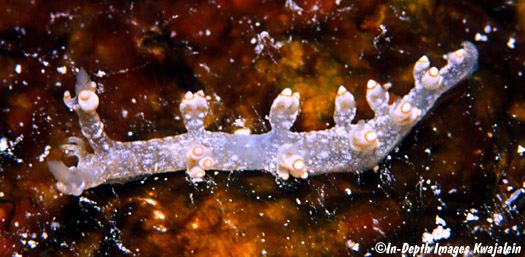
Bornella stellifer is relatively common in the Marshalls and lives primarily on intertidal and shallow subtidal lagoon reefs. It is similar to other local Bornella species including Bornella johnsonorum, Bornella hermanni, and Bornella sp. e468, but it can be distinguished by details of coloration and by internal anatomy. In the Marshalls, B. stellifer is the only Bornella species that consistently has orange subapical rings on the dorsolateral processes. Internal characteristics that separate the various species include the extent of denticulation on the central radular tooth, the distribution and numbers of hooks on the male reproductive organ, and the color and distribution of spines in the alimentary canal. We have seen specimens ranging from 16 to 48mm long. Bornella stelllifer was first reported in the Marshalls from Enewetak and Kwajalein Atolls as Bornella adamsii by Johnson & Boucher (1984). Two specimens were also observed at Rongelap Atoll by John and Lynette Flynn and another by Ken Cone and Beth Van Zummeren. One was also photographed at Ailinglaplap Atoll by Stan Jazwinski.

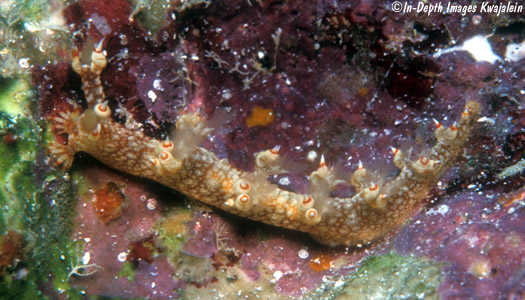
Looking close, you can see the gills on the inner sides of the dorsal processes.
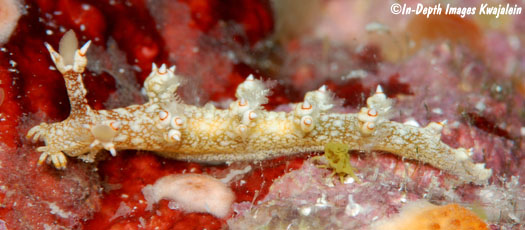
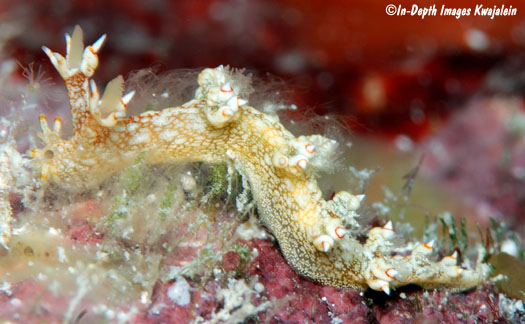
The bright orange patch under the second set of dorsolateral processes in the next photo is a commensal copepod., a small crustacean living on the body of the nudibranch. This specimen was found under a rock at about 6m on a Kwajalein Atoll lagoon reef on 16 February 2009.
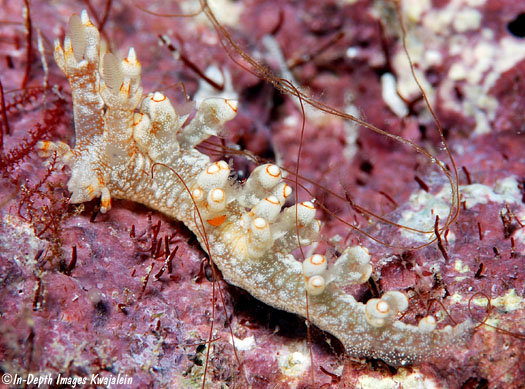
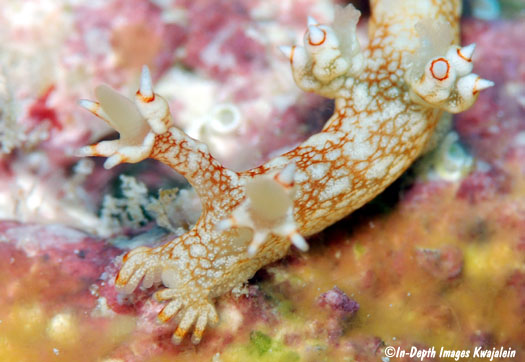
Closeups of the rhinophore process shows a posterior papillae similar in height to the rhinophore, although it looks as though the papillae could stretch out a ways.
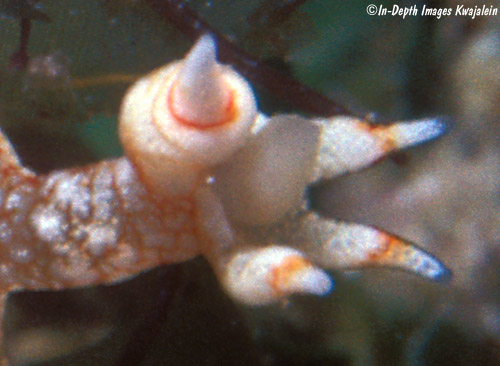
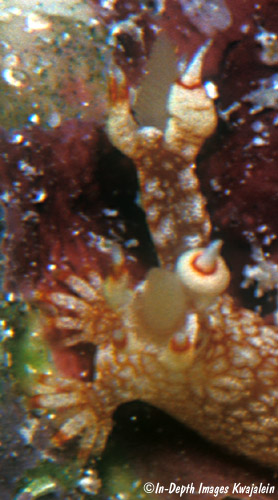
The specimen below from Rongelap Atoll was photographed by Ken Cone.
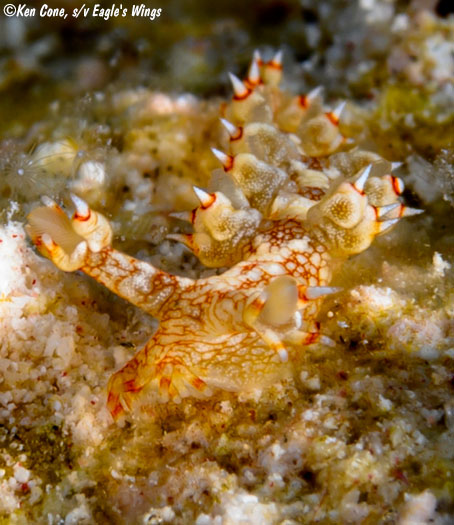
Another was found by Ken Cone and Beth Van Zummeren in shallow water at Majuro Atoll. This one is carrying a small orange commensal copepod just behind the fourth pair of dorsolateral processes.
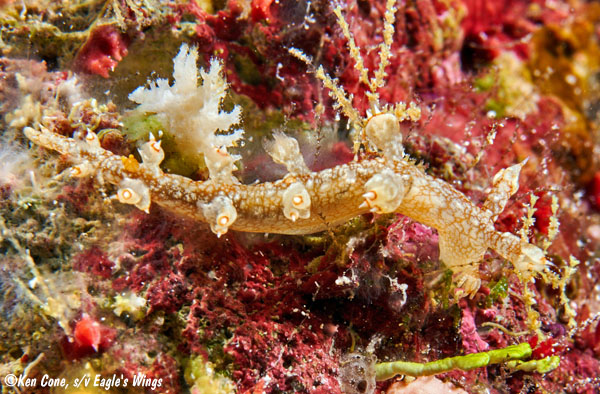
The photo below by Stan Jazwinski was from Ailinglaplap.
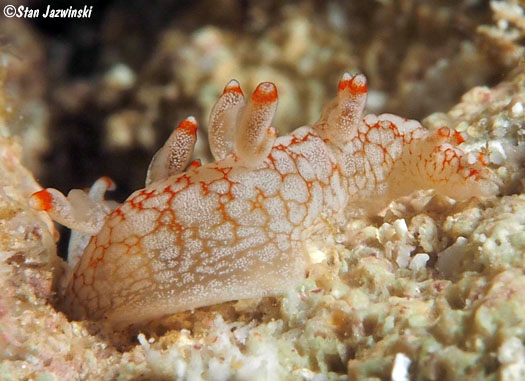
We think this is a tiny juvenile specimen. It measured about 4mm and was found under a rock on a Kwajalein Atoll seaward reef at a depth of about 10m on 1 June 2009.
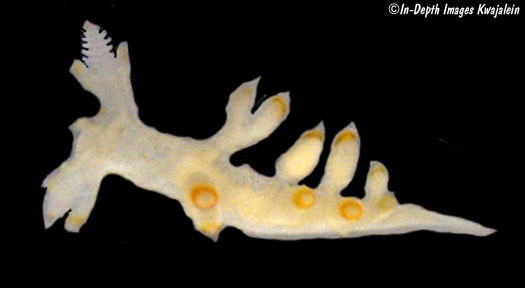
Created 20 January 2007
Updated 16 February 2022